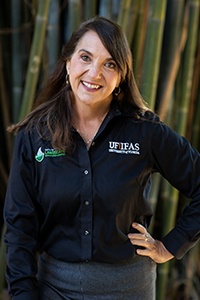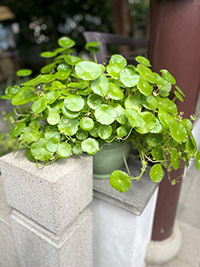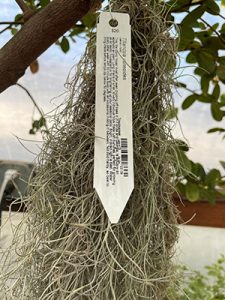Wendy’s Wanderings for September 2024

Beauty is in the Eye of the Gardener
September 4, 2024
During a recent trip with Master Gardener Volunteers to a Chinese garden, we couldn’t help but chuckle at a few potted plants we encountered. Nestled beside a stunning pond filled with lotus and water lilies, one pot featured a plant that, at first glance, resembled miniature water lilies. However, upon closer inspection, we realized it was one of Florida’s top problem plants—dollarweed (also known as pennywort). We were astonished! The dollarweed, often a nuisance in Florida landscapes, looked surprisingly charming as it spilled over a celadon ceramic container perched on a stone pedestal. Most visitors walked by, unaware of the challenges posed by Hydrocotyle spp. in Florida gardens. It served as a reminder that a “weed” is simply a plant growing in the wrong place—and that, in the right setting, even a troublesome plant can be seen as a welcome addition to a garden.

Our lesson continued as we spotted another familiar Florida pest, yellow nutsedge (Cyperus esculentus), thriving in an equally attractive container just a few feet away.
This experience got me thinking about other plants that Floridians often consider troublesome, but which have a different reputation elsewhere. Take, for example, Virginia creeper (Parthenocissus quinquefolia). This vine, native to most of North America, grows in USDA zones 3 to 10. I once received a call at the Extension office from a woman who wanted to know if it was okay to grow Virginia creeper on her mailbox in Gainesville. She had fond memories of using the vine on her mailbox back in Indiana. I assured her that it is indeed a Florida native, with beautiful fall color and berries that birds love. However, I also mentioned that she might be the first in her neighborhood to make this plant choice. “And that’s okay,” I added. In fact, this deciduous vine, with its palmate leaves and five leaflets, is so valued in other regions that there are preferred cultivars like ‘Englemanii’, ‘Variegata’, and ‘Yellow Wall’.
Another plant we might take for granted in Florida is Spanish moss (Tillandsia usneoides). This epiphyte drapes gracefully from oak trees and other canopy species across the state. After a windstorm, one of my gardening tasks is to gather the fallen clumps of Spanish moss and add them to the brush pile. Imagine my surprise when I recently saw a small bundle of Spanish moss for sale at an out-of-state nursery, priced at $20. I know it’s used in the floral and craft industries, but seeing it marketed as a special plant made me appreciate my abundant “collection” all the more. Once again, it reminded me that beauty is truly in the eye of the beholder and gardener.

— Wendy Wilber
Back to the September 2024 Neighborhood Gardener
